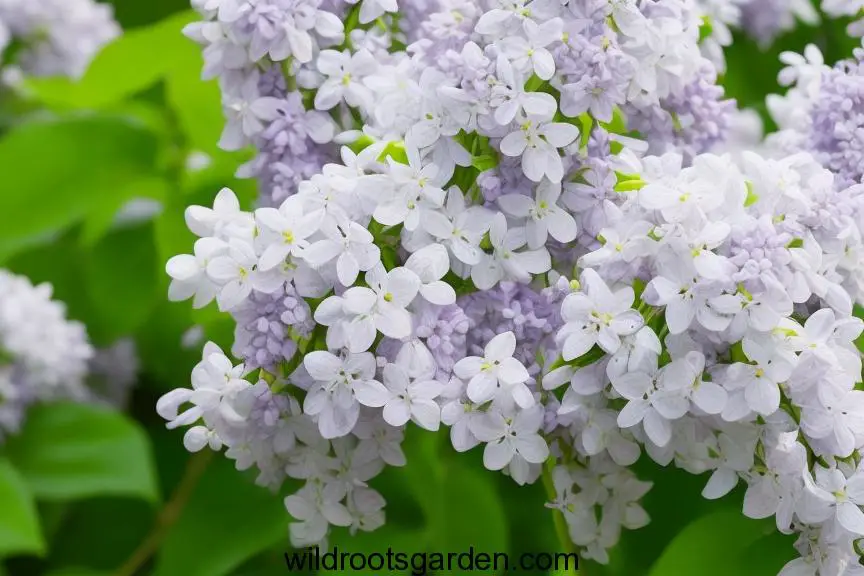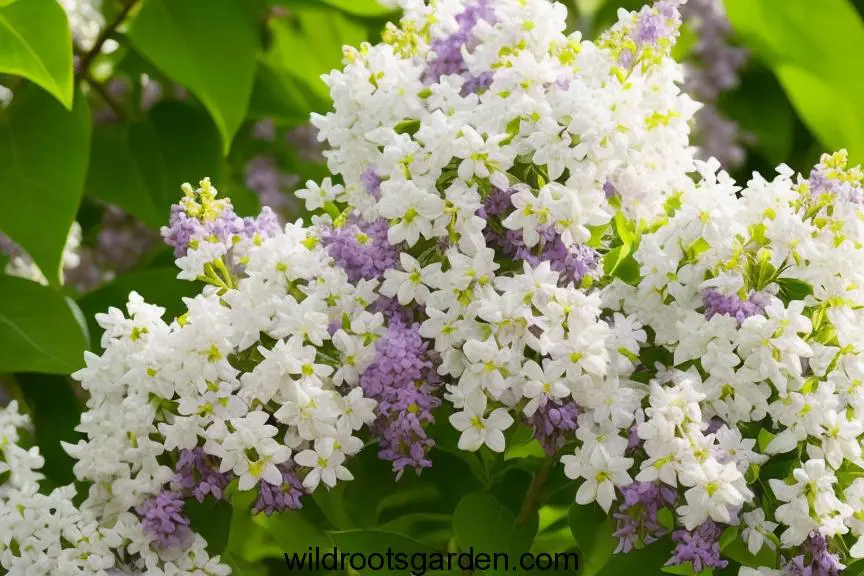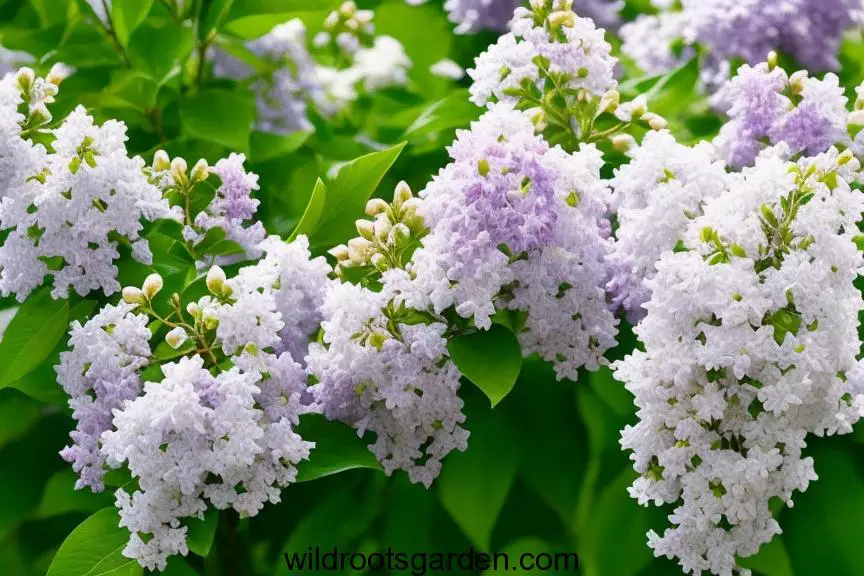Lilac Common White. In the realm of garden beautification, few plants capture the essence of elegance and charm quite like the Lilac Common White (Syringa vulgaris). Renowned for its ethereal white blossoms and delicate fragrance, this perennial shrub has been a cherished addition to gardens for generations. At our nursery, we take immense pride in offering the Lilac Common White, and in this article, we delve into its enchanting features, care tips, and the unparalleled aesthetic it can bring to your outdoor sanctuary.
The Allure of Lilac and Common White
A sight to behold, the Lilac Common White adorns gardens with stunning clusters of fragrant, snow-white blossoms. Late April sees the appearance of these blossoms, which stand out against the backdrop of luxuriant greenery. The delicate scent of Lilac Common White blooms enhances the sensory experience and makes them a favorite of both pollinators and garden aficionados.
Key Features:
- Blossoms: The distinctive, pure white blossoms are composed of multiple florets, forming tight, elegant clusters.
- Foliage: The heart-shaped leaves of the Lilac Common White are a vibrant green, offering a lovely complement to the blossoms.
- Fragrance: The delicate aroma is both soothing and captivating, creating an inviting atmosphere in your garden.
Cultivation and Care
Growing the Lilac Common White in your garden is a rewarding endeavor that will give you year-round enjoyment from its alluring beauty. Take into account the following care instructions to make sure your Lilac flourishes and becomes the focal point of your outdoor oasis:

- Location: Choose a sunny spot in your garden with well-draining soil. Lilacs flourish in full sun, which encourages optimal blooming.
- Planting: Dig a hole slightly larger than the root ball of your Lilac Common White. Position the plant at the same depth as it was in the nursery container. Backfill with soil and water thoroughly.
- Watering: While Lilacs are relatively low-maintenance, consistent watering during the growing season is crucial. Aim for about 1 inch of water per week, adjusting based on rainfall.
- Pruning: Prune your Lilac immediately after flowering. This encourages new growth and ensures a robust bloom for the following year.
- Fertilization: Apply a balanced, slow-release fertilizer in early spring to promote healthy growth and vibrant blossoms.
Creating an Idyllic Lilac-themed Garden
Integrating Lilac Common White into your garden landscape opens the door to designing a serene and visually captivating outdoor space. Here are some ideas to infuse the allure of Lilacs throughout your garden:

- Lilac Walkway: Line a garden path with a row of Lilac Common White shrubs. As you stroll along, the fragrant blooms will envelop you in their soothing scent.
- Mixed Blooms Border: Pair the Lilac Common White with other flowering plants that complement its elegance. Consider roses, peonies, or lavender for a harmonious blend of colors and textures.
- Lilac Arbor: Create a picturesque focal point by training Lilac vines to climb over an arbor or trellis. This creates a magical entrance to a garden sanctuary.
Final Thoughts
The Lilac Common White endures as a classic representation of grace and unadulterated beauty. By including this gorgeous shrub in your garden, you’re not only boosting the beauty of your outdoor area but also establishing a sanctuary of peace and scent. Your lilac-themed garden can become a refuge for repose and adoration as well as an oasis that satisfies the senses year after year with the proper maintenance and thoughtful design.
Frequently Asked Questions
1. What is the best time to plant Lilac Common White in my garden?
The best time to plant Lilac Common White in your garden is in the late fall or early spring. This period allows the plant to establish its roots before the extreme heat of summer or the cold of winter. Planting in cooler weather also reduces stress on the plant, ensuring a healthier and more successful establishment.
2. How should I prepare the soil for planting Lilac Common White?
Preparing the soil properly is essential for the healthy growth of Lilac Common White. Start by choosing a well-draining location with plenty of sunlight. Loosen the soil to a depth of about 12 inches and mix in organic matter like compost to improve soil structure and fertility. Test the soil pH and adjust it to a slightly alkaline range of 6.5 to 7.5, which is optimal for lilacs.
3. How do I care for Lilac Common White during its blooming season?
Lilac Common White’s blooming season is a highlight for any garden. To care for it during this time, make sure to provide adequate water to keep the soil consistently moist but not waterlogged. Applying a balanced fertilizer in early spring before new growth starts can promote healthy blooming. Deadheading faded flowers will encourage more blooms and maintain the plant’s neat appearance.
4. How do I prune Lilac Common White to keep it looking its best?
Pruning is crucial to maintaining the shape and health of your Lilac Common White. After the blooming season, usually in late spring, remove spent flowers to prevent seed production. Additionally, prune out any dead, diseased, or crossing branches to improve air circulation and minimize disease risks. Avoid heavy pruning, as this can affect next year’s flowering.
5. Are there any common pests or diseases that affect Lilac Common White?
Lilac Common White is generally resistant to many pests and diseases, but there are a few issues to watch out for. Aphids can sometimes appear, causing leaves to curl and distort. These can be controlled with insecticidal soap or strong blasts of water. Powdery mildew might also affect the leaves, especially in humid conditions. Choosing disease-resistant varieties and ensuring good air circulation can help prevent these problems.

